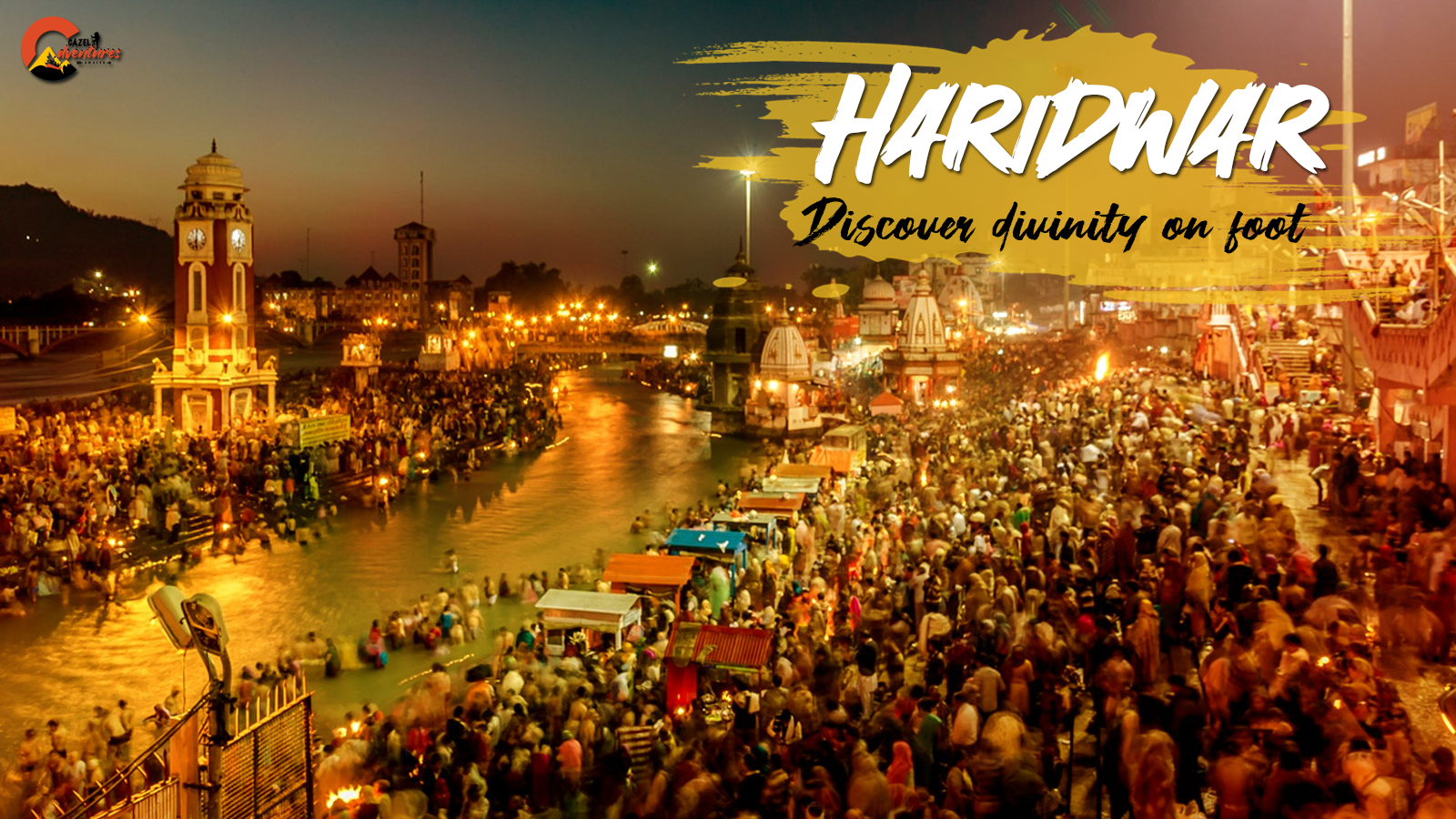Top Places to Visit in Haridwar: Immerse in Indian Culture

Haridwar is one of the seven holiest cities in India. People wish to emerged in the holy water of Ganga after they die so that they can find peace but honestly it is the place to go if you want to find peace and serenity while you live. It is situated in Uttarakhand at the point where the sacred river Ganga enters the Indo-Gangetic plains for the first time. This city can be called a Hindu temple town and is regarded as the spiritual haven. The place has numerous temples and ashrams to help in spiritual enlightenment
Haridwar is a complete pilgrimage experience. Thus there are numerous of visitors who come to city for spiritual awakening. A pilgrimage is not about conquest but about surrender. It is about transcending the self and reaching a state of boundless consciousness. For those seeking a higher purpose in life, making one's life a pilgrimage can be a path to spiritual fulfillment.
Haridwar is a spiritual haven. The holy Ganga, ancient temples, and serene atmosphere create an unforgettable experience.
The best time to visit Haridwar is during the winter season from October through February. The weather during this period is pleasant and ideal for outdoor activities and sightseeing. One of the major attractions during these months is the Kumbh Mela. It is the carnival which is held periodically based on Hindu astrological calculations. This grand festival attracts a massive influx of pilgrims and tourists from all over the world.
- Ganga Aarti
-
- The Ganga Aarti is a massive pooja that is done at Har Ki Pauri - a ghat along the banks of the Ganges.
- The Arti is conducted both in the morning and evening at sunrise and sunset
- The Ganga Aarti is a prayer offering to the river Ganga.
- The ceremony is free for all to attend and has attracted large crowds who gather on both sides of the river to participate and witness the sacred ritual.
- The Aarti includes the chanting of the Ganga Lahari Mantra and offerings of "Panchamrut" and flowers to the river.
- The final segment features a special Aarti song dedicated to the Ganga and the priests hold large copper lamps (Diya).
- The evening Aarti is particularly popular and has been attracting large crowds from years.
- It is advisable to arrive at least an hour before sunset to secure a good spot. The ceremony typically lasts more than three hours.
- Har Ki Pauri
-
- Har Ki Pauri is one of India's oldest and most respected pilgrimage sites.
- The name "Har Ki Pauri" translates to "The Lord's Steps," signifying its importance as the gateway to the divine.
- According to Indian mythology, Har Ki Pauri is one of the four places where drops of the celestial elixir, Amrita, accidentally spilled from the pitcher carried by the celestial bird Garuda.
- These four locations, including Haridwar, have become significant sites for the Kumbh Mela, celebrated every 12 years in rotation.
- During the Kumbh Mela, millions of devotees gather to perform ritualistic bathing in the Ganges, believing it purifies the soul and grants liberation.
- A visit to Har Ki Pauri is a profound spiritual experience, and it typically takes 2-3 hours to explore.
- Mansa Devi Temple
-
- The Mansa Devi Temple is dedicated to Mansa Devi which is a form of Shakti who is believed to have emerged from the mind of Lord Shiva.
- Mansa Devi is regarded as the sister of the serpent king Vasuki and is also considered a daughter of Shiva in his human incarnation.
- This temple is one of the prominent Shakti Peethas in North India, involving seven Shakti goddesses, including Naina Devi, Jawalamukhi, Chintpurni, Brajeshwari, Chamunda Devi, and Jayanti Devi.
- Pilgrims visit this temple to seek the blessings of Mansa Devi, especially during the Navratri festival.
- Chandi Devi Temple
-
- The Chandi Devi Temple is one of India's most ancient temples and is dedicated to Goddess Chandi. According to legend there was a demon king Shumbh who was mesmerised by captivated by Goddess Parvati's beauty and wanted to marry her. But when he was refused he sent two two chiefs Chand and Mund to fight Parvati. In response, the goddess created Chandi, a powerful deity who defeated the demons.
- Thousands of devotees visit this temple every year particularly during the festivals of Chandi Chaudas and Navratri. The temple also has a Kumbh Mela which is attended by thousands of tourist every year.
- There are approximately 350 stairs to reach the main shrine thus a lot of people prefer the ropeway.
Was this article helpful?
25 out of 78 found this helpfulIncorporating gratitude into our daily where we write down three things we are grateful for each day.
Follow Author